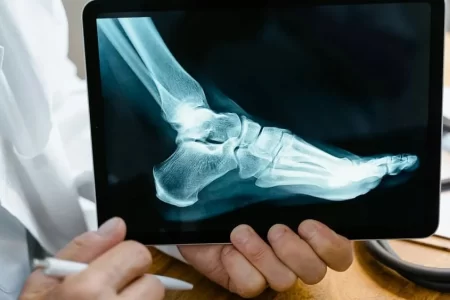4 Innovative Treatments for Osteoarthritis
- Updated on: Nov 25, 2024
- 2 min Read
- Published on Oct 20, 2023

A complex disorder that cannot yet be cured, those affected by osteoarthritis can struggle to enjoy a good quality of life.
That being said, there are a range of treatments available for osteoarthritis, with advancements in regenerative medicine paving the way for innovation.
Discover all the latest treatments for osteoarthritis below, with options for people of all ages.
1. Stem cell therapy
Stem cell research has generated a huge amount of interest, both among researchers and the general public. With the ability to repair and replace damaged or aging tissues, stem cell therapy is currently being used to treat a whole host of conditions including osteoarthritis.
Research indicates that stem cells have the ability to release anti-inflammatory factors that can help the body to heal and help reduce pain. This is particularly effective when they are injected directly into the affected joint.
It is important to understand that people respond differently to this treatment, with some experiencing long-term pain relief that lasts for longer than a year and others only getting short-term relief.
You can explore more about stem cell therapy for osteoarthritis at bioxcellerator, one of the global leaders in cell therapy and regenerative medicine.
2. Platelet-rich plasma injections
Platelet-rich plasma injections, also referred to as PRP therapy, take advantage of the blood’s natural healing properties to repair damaged cartilage, tendons, ligaments, muscles, and bone.
Although this treatment is not widely recognized as a treatment for osteoarthritis, platelet-rich plasma injections are being used by an increasing number of people to treat this condition.
Most commonly used to treat osteoarthritis in the knees, this treatment involves a doctor injecting platelet-rich plasma directly into the affected joint. This treatment aims to reduce pain, improve joint function, and repair damage to the cartilage.
It is worth noting that platelet-rich plasma injections are still being researched, and more clinical studies are needed to prove their effectiveness.
3. Talarozole
A new drug called Talarozole has shown promising signs in treating osteoarthritis and reducing inflammation. A retinoic acid metabolism-blocking agent (RAMBA), Talarozole works by blocking the breakdown of all-trans-retinoic acid.
In studies, Talarozole has had success in reducing inflammation in knee joints and in treating hand osteoarthritis, although more research is needed for this drug to be approved as a treatment for osteoarthritis.
4. Autologous chondrocyte implantation
Autologous chondrocyte implantation (ACI) involves the removal of small sample tissue from a patient’s joints. This tissue is then used to grow a new supply of cartilage cells.
These fresh cells are then returned to the damaged area of the joint, where they form new cartilage.
ACI has been shown to improve the symptoms of osteoarthritis, particularly concerning pain management and mobility. It may also be able to slow down the development of this condition and delay the need for joint replacement surgery.
This treatment is a good choice for people with early-stage osteoarthritis and for younger patients.











